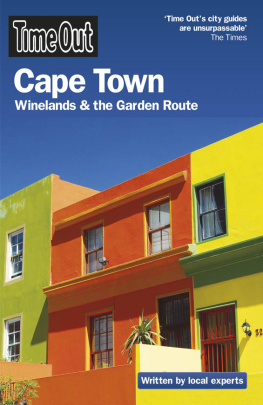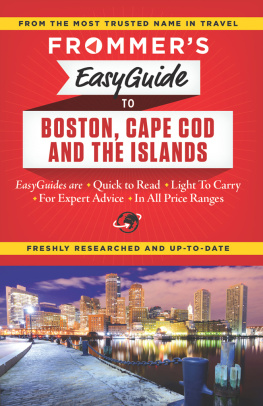

Published by The History Press
Charleston, SC 29403
www.historypress.net
Copyright 2008 by J. North Conway
All rights reserved
First published 2008
Second printing 2009
Third printing 2010
Fourth printing 2011
Fifth printing 2012
e-book edition 2013
Manufactured in the United States
ISBN 978.1.62584.382.1
Library of Congress Cataloging-in-Publication Data
Conway, J. North (Jack North)
The Cape Cod Canal : breaking through the bared and bended arm / J. North Conway.
p. cm.
Includes bibliographical references.
print edition ISBN 978-1-59629-374-8
1. Cape Cod Canal (Mass.)--History. 2. Canals--Massachusetts--Design and construction--History. I. Title.
HE396.C3C66 2008
386.46--dc22
2008001935
Notice: The information in this book is true and complete to the best of our knowledge. It is offered without guarantee on the part of the author or The History Press. The author and The History Press disclaim all liability in connection with the use of this book.
All rights reserved. No part of this book may be reproduced or transmitted in any form whatsoever without prior written permission from the publisher except in the case of brief quotations embodied in critical articles and reviews.
Contents
Acknowledgements
The author would like to thank the following people, organizations and institutions for their help in researching this book: Lucy Loomis of the Sturgis Library in Barnstable; Barbara L. Gill, archivist for the Town of Sandwich Archives; Anne Connolly Saganic of the West Falmouth Library; Ranger Samantha Mirabella, the United States Army Corps of Engineers; Snow Library; Truro Public Library; Wellfleet Public Library; West Dennis Public Library; Whelden Memorial Library; Woods Hole Public Library; Historical Society of Old Yarmouth; Osterville Public Library; the Cotuit Library; the Hyannis Public Library; Dennis Public Library; Eastham Public Library; Falmouth Public Library; Mashpee Public Library; Wilkens Library; Cape Cod Community College; the Jonathan Bourne Historical Center; Bourne Historical Society; Cape Cod Maritime Museum; Centerville Historical Museum; Falmouth Historical Society & Museums on the Green; Osterville Historical Society and Museum; U.S. Life-Saving Service Heritage Association; Nantucket Life-Saving Museum; Wellfleet Historical Society; U.S. Coast Guard; Historians Office, Woods Hole Historical Museum; Massachusetts Historical Society; Provincetown Library; Wareham Free Library; the Bristol Community College Learning Resource Center; the University of Massachusetts Library; and my son, Nate Conway.
Introduction
There are not many things in this life that one can claim with some certaintythis much I know is trueand mean it. As a writer, it has always been a quest of mine to find such things, to find the truth in this world, even if it is only a small truth. That would suffice. I have learned this much, however: sometimes it takes longer than anticipated to find the truth. Nevertheless, it is a worthwhile task to uncover those things that allow one to say, This much I know is true.
We hit the beach early in the old days, always early in the morning before the sun was too high. And we would stay at the beach most of the morning, with a break for lunch and some sightseeing, and then wed go back and hit the beach again until the afternoon wore on and the chill set in. Then, we would pack up everything, tossing sandy wet towels, toys, blankets, books and anything else we had brought into the car, and head home from the Cape, making sure to stop to buy an ice cream that melted and dripped all over the place. By the time we arrived back home, my two boys would be asleep in the backseat of the car, still warm and brown and sandy and, most of all, happy.
When my son was little and I was unemployedbeing unemployed for periods of time is a fact of life for most writersI used to take him to Onset Beach in Wareham, Massachusetts, not far from the Buzzards Bay side of the Cape Cod Canal. Onset was a good beach for kids, small and protected from the surf. I would bring my eight-year-old son and his nine-year-old cousin there early in the day, wed lay out a blanket and they would hit the water, playing there in a protected beach area that was no more than three feet deep and surrounded by bright orange netting that served as a barrier. The kids, and there were loads of them at the beach, would be splashing and running and throwing sand and building sand castles, doing what kids usually do at the beach. And they were watched over, not only by us, the parents, but by two on-duty lifeguards sitting high above the kids in whitewashed wooden lookout chairs, young and bronze and fit, wearing bright orange lifeguard trunks with whistles dangling around their necks. Together we watched over the small beach and the children playing there.
My son Nate and my nephew Andy, whom we had more or less adopted during the summer, would splash around for hours, engaged in their games of sand castle building and pretend shipwrecks, growing tanner and tanner in the salty water and bright glowing sun. My wife always made sure that I took loads of sunscreen with me on these excursions and I dutifully would call my two boys in at intervals during the day and smear the white lotion all over them. Nate would complain and Andy would complain, but the sunscreen ritual went on most of the day.
I would sit on a blanket, using towels to prop up my head, and read or write, or simply sit and watch the boys and the sea and the sand and the sun, rubbing sunscreen all over myself at intervals.
When it was noon or so Id gather my boys up, dry them off and we would head up the sandy embankment onto the sidewalk where we would scout for places to eat lunch. There would be no indoor restaurants for us because we were sandy and wet, wearing flip-flops and soggy sneakers, naked except for our bathing suits or cut-off khaki trousers, which was my usual attire then, with battered old straw hats to shade our faces. I adorned the two boys with plastic sunglasses, ones they bought with emblems of their favorite television cartoon characters emblazoned on themMickey Mouse and Casper the Friendly Ghost. The lenses were always scratched and covered with sand and sunscreen oil. I wore my old prescription aviator glasses, whose lenses were also scratched beyond belief, so much so that I could only wear them if I knew I would be walking in a straight, unobstructed line; otherwise, they hung around my neck from a shoestring I had tied to the ends. We were a motley, sun-drenched, water-logged crew and I dont think any restaurant would have allowed us inside anyway. There was always an outside hot dog stand or a place where we could buy pizza by the slice and sodas. We would fill up on whatever caught our scratched lenscovered eyes as long as it was outdoors. And there would be a small stand where, for dessert, we could buy a cone of ice cream or sticky blue cotton candy.
We would find a place to sit on a public lawn or up along the curbing. We werent alone. Onset would be crawling with little kids and their parents looking for lunch. We would stroll out onto the town pier in Onset to see the boats, and sometimes wed see the big Cape Cod cruise ship sail by with people waving from the deck. The cruise usually took sightseers through the Cape Cod Canal from Buzzards Bay to Cape Cod Bay on the other side. And the boys would ask to take the cruise, but it wasnt something I could afford, nor did I feel comfortable taking the two small boys out on a canal cruise.
Next page

















